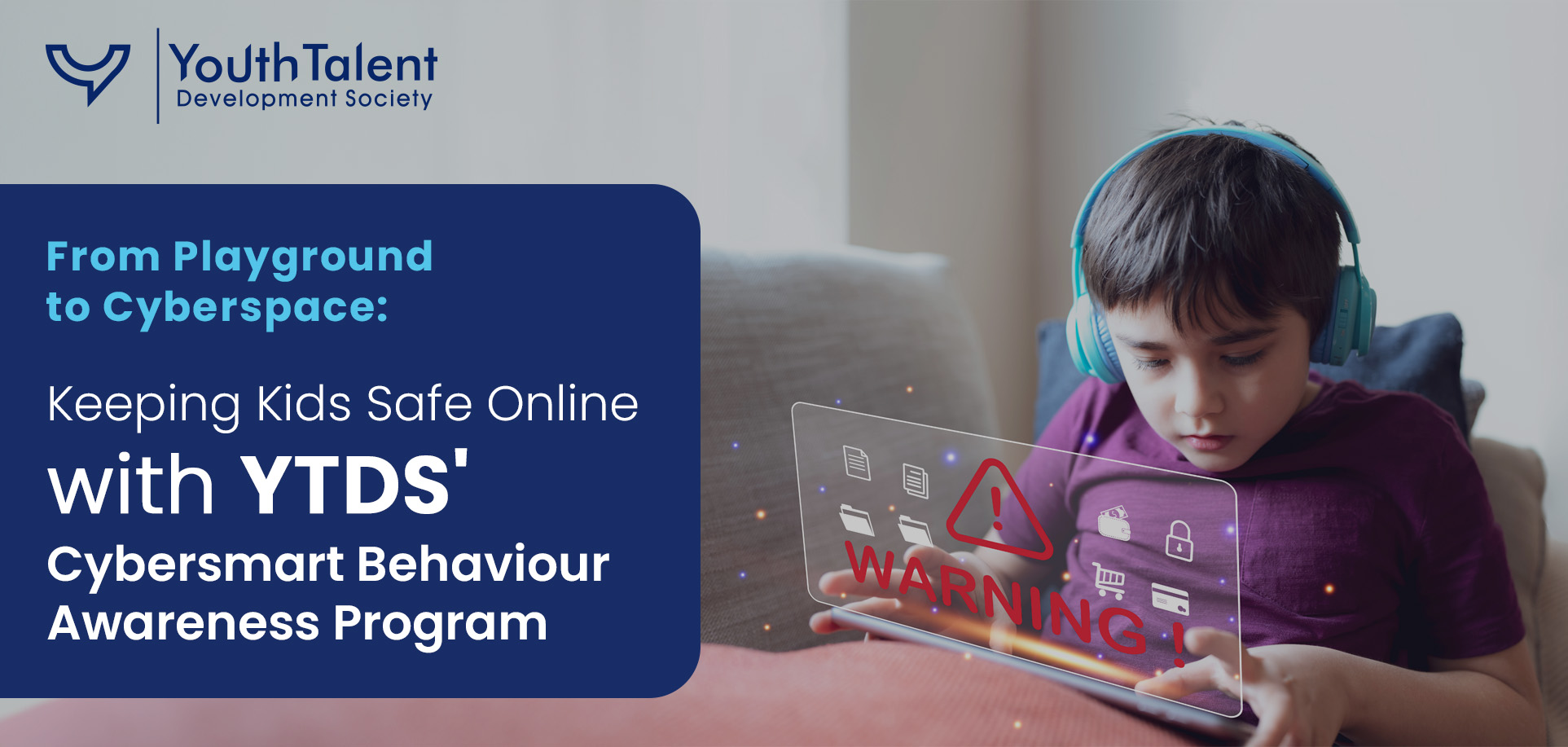
From Playground to Cyberspace: Keeping Kids Safe Online with YTDS' Cybersmart Behaviour Awareness Program
There has been a very major change for which children are born now and how this is
different from what we see today. These were the days when children would run out in the
open air, engage in sports or play games with other kids. Nowadays, everything about them
is about the screen. They can engage themselves into various forms of online gaming,
social media and even some learning applications among other things. The present-day
digital transformation offers infinite chances for teaching and interacting among young
people but it also comes with serious unforeseen dangers that require continuous
monitoring and avoidance operations.
The Digital Age of Childhood
The current generation of children is referred to as "digital natives" since they have
technology intertwined with everything they do. Studies show that an average kid spends
about seven hours per day in front of a screen.From playgrounds to cyberspace which is
challenging most parents and teachers concerned about their development, socialization
and overall well-being. The internet can be a great source of knowledge and entertainment;
however, it might expose children to serious risks if not well managed.
The Hidden Dangers
Much as the actual world, there are many dangers in this online world. Cyberbullying,
online predators, and inappropriate content might just be a few of those dangers that
children encounter. Anonymity provided by internet makes it easy for bad characters to do
wrong things to fragile souls. Abandoning adolescents in such circumstances could lead
them into the hands of these dangers resulting in stress disorders, suicidal intentions and
death.
Navigating the Digital Jungle
Cyberbullying:
Cyberbullying is a widespread problem that deeply affects the psychological wellbeing of young people. In contrast to conventional bullying, which happens between
physical persons, cyberbullying occurs in the internet space often without
revelation of the offender. Cyberbullying can manifest itself through different acts
like trolling, harassment or exclusion. Victims might be anxious, depressed and
lonely sometimes. Educating children on how to detect cyberbullying signs is
important, and they should be encouraged to report such incidents if they happen
to witness them or are victims themselves.
Online Predators
The smart method of grooming children that online predators use takes time for it
so that they can be exploited. They often pretend to be peers or good-natured adults
to gain access to personal information and then manipulate kids into doing wrong or
treacherous things. Recognizing the signs of predatory behavior and teaching
children how to be careful with their online relations is one of the most important
steps towards preventing exploitation. Tips include avoiding sharing personal
information, being wary of new online friends, and reporting any suspicious
behavior to trusted adults.
Inappropriate Content
The internet is filled with harmful content such as violence, hate speech and explicit
material. Children are disproportionately affected by exposure to such materials
and it can affect their developments and mental stability. Parents and guardians
need to be extra cautious about monitoring their children’s online activities so that
they only get age-appropriate materials. Content filters can be set up and dialogue
on how adverse content affect people to avoid negative influences on children’s
lives.
Building a Safety Net
Open Communication:
Communication between parents, caregivers as well as youngsters is the crucial
foundation of being safe online. When adults know how to motivate their children
on matters that concern online dealings this ensures that they stay updated
regarding possible dangers and can also act as a stop gap when need arises so that
something can be done before it escalates. Trust and openness create an
atmosphere where kids feel good about asking for assistance whenever they find
themselves in difficult circumstances over the net.
Setting Boundaries:
Children's online behavior can be effectively directed by having well defined
policies and standards regarding internet usage. This entails putting time
restrictions on usage, allocating certain times to specific online capabilities and
ensuring that the age of an individual is considered while accessing any site or
domain on the Net. Consistency in implementing these barriers helps them form
healthy digital tendencies as they learn how to balance between what they do
online and in physical space.
Parental Controls:
Tools for parental control are of great importance when it comes protecting children
from internet. Tools such as these can prohibit access to unsuitable material, keep
track of Internet operations and restrict time spent looking at screens. These range
from device and application-based settings to independent programs. As a whole,
these resources would serve the different people needing them most, especially
parents among others.
Digital Literacy Education:
Teaching children necessary digital literacy skills is one of the main functions
performed by schools and community organizations. The basic skills of digital
literacy include navigating the Internet securely, identifying reliable sources and
guarding personal information. Such educational programs equip children with the
necessary tools for making informed choices while ensuring their online safety.
The Role of YTDS
The YTDS (Youth Talent Development Society) works to ensure that young people are safe
on the internet’s playground by providing them and their families with the tools they need
for safe online navigation. The #CybersmartBehaviourAwarenessProgram is their major
initiative in that regard, which puts emphasis on increasing awareness of the potential
risks of being on the internet as well as equipping one with practical measures against
such dangers. Interactive workshops within this program tackle issues like cyberbullying,
sexual exploitation, and even inappropriate content among others making it more
interesting and relatable. Through partnerships with other organizations such as schools
and NGOs, YTDS increases its outreach thereby creating an all-round support mechanism
for teaching about safe internet usage.
Conclusion
It is most important to ensure children’s safety when they are online, since, in this modern
age, digital world has become an integral part of their lives. It follows that the shift from
playground to cyberspace brings about new challenges that require anticipative and
knowledgeable strategies. For instance, we can build a strong safety net for our kids
through open dialogue, boundary setting, use of parental guidance and promotion of digital
literacy. The #CybersmartBehaviourAwarenessProgram by YTDS is an example of a
dedicated initiative to equip children with necessary tools and knowledge needed for safe
navigation in the digital jungle. Collaborative efforts towards education can lead to
establishing a safer online environment where children can explore without worries, learn
as well as blossom.



